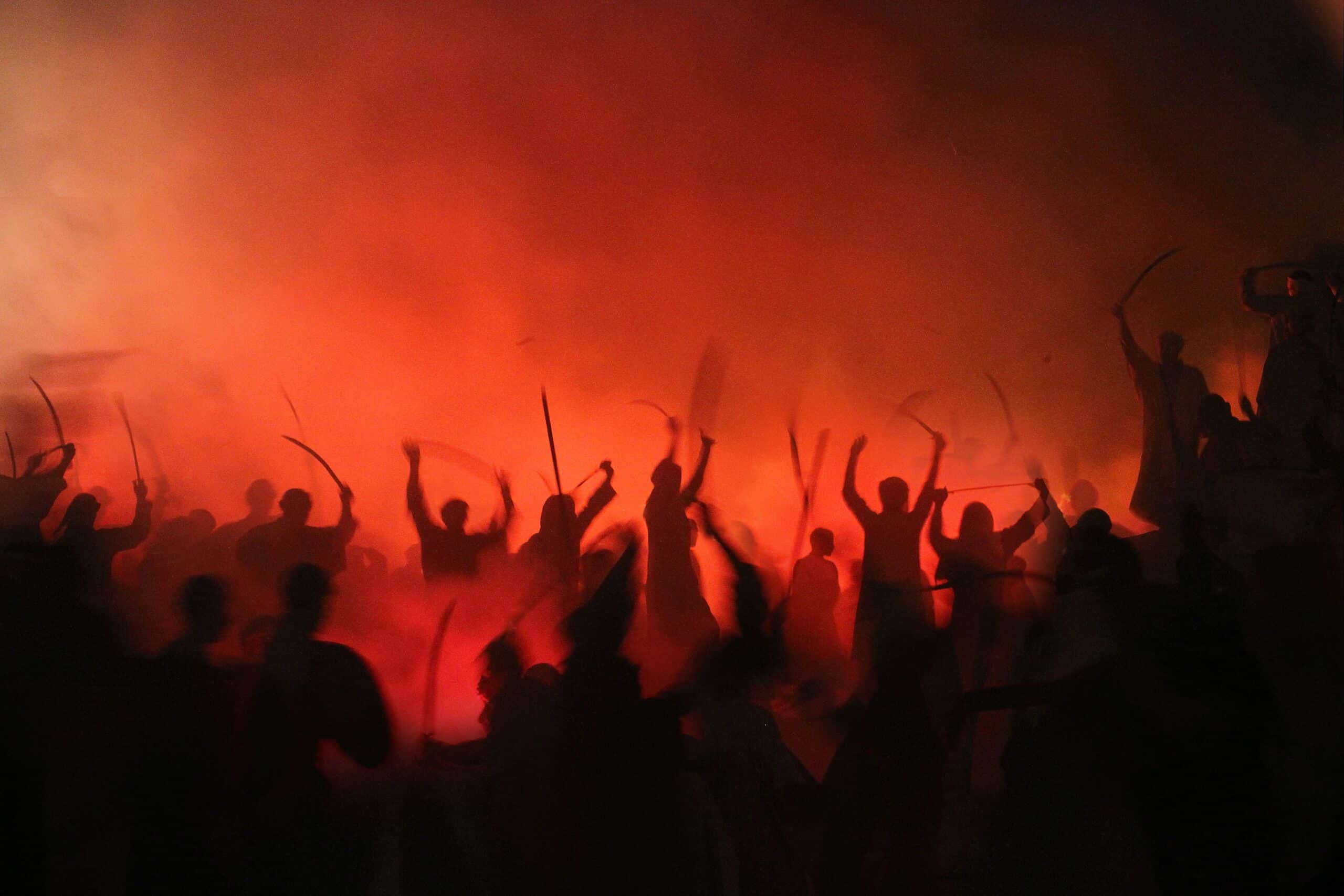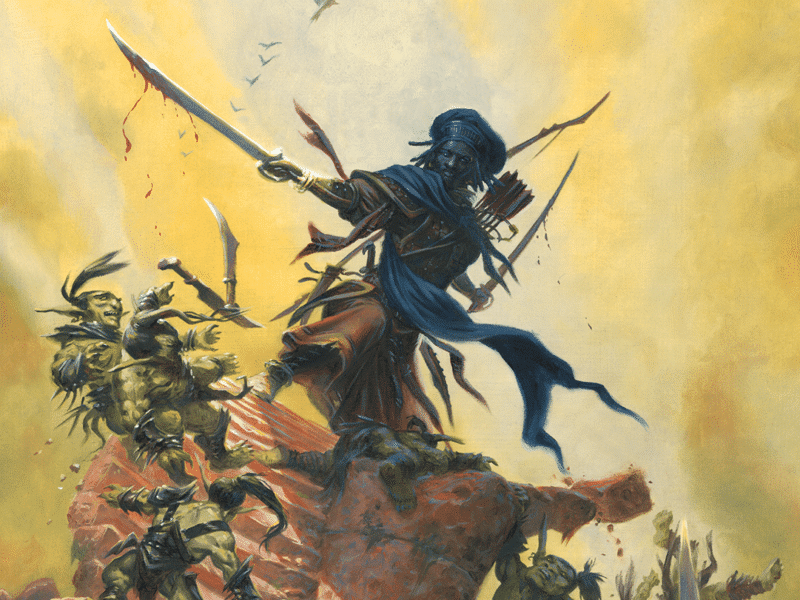As has been mentioned in many of these articles, Dungeons & Dragons is a game about encountering enemies in remote places, defeating them, and returning to the hearth with loot and tales of great deeds. And while the rules allow for a huge range of other themes – mystery, intrigue, Politics, diplomacy, betrayal and much more, most adventures include at least one segment of “Get out there, find monsters, and slay them!” The game’s theme is on clear display in its very name – the system is called dungeons and dragons for a reason!
Strangely, there’s often an imbalance between these two parts of the game. “Dragons” is a placeholder term for “monsters,” and there’s a colossal number of such to choose from in D&D’s massive range of modules and adventures. And any DM who feels that the official monsters are sufficient can always find a thousand more with the aid of a quick online search, or they can simply homebrew their own monstrous creation.
But what about the “dungeons” part? Well, it might look as if this is a “fill-in-the-blank-name” too that covers a wealth of different environments. To some extent, this is true: while there’s a mountain of adventures available that are set in dungeons of one kind or another, there are also many quests that will force the adventurers to fight hostile creatures in forests, on fields or mountains, underwater, in taverns or on streets, inside temples or extinguished volcanoes, and so on. But in truth, when a combat starts, many of these locations are interchangeable! The reason is the lots of them are in effect a flat surface of a certain size. This surface might be indoors or outdoors, huge or tiny, perfectly free from obstacles or come with a few objects – but all dissimilarities beyond these are usually cosmetic. At best, the terrain might be difficult, or there might be a nearby threat, such as an open fire, but that’s about it. This is a real pity, because a battlefield – be it a common room in an inn, a mile-wide clearing in a forest, or something else – that’s designed with some care can turn a standard skirmish into a completely more interesting and challenging events. In effect, such a battleground becomes a participant in the fight, and can tip the scales of a battle in surprising ways. Most importantly, they’re also fun and memorable! Consider the difference between “Do you remember when we fought those trolls?” and “Do you remember when we fought those trolls in a middle of a churning river full of floating debris?”. One of these two questions points to a far more unforgettable battle.
This article will outline a few dead simple ways to make combat in Dungeons & Dragons much more engaging and extraordinary. Most of these tricks are exceedingly straightforward and can be used for many different locations. Because it doesn’t take much to turn a run-of-the-mill fight against a bunch of orcs into a highly unpredictable battle that will have all players sitting up straight in their seats.

We’ll start with a couple of general pro-tips for making any fight in D&D more dynamic and fun! Firstly, take care to describe the scene in detail, and indicate things that might be of interest to any character engaged in combat. Example of these include loose planks, scattered tools, dangling ropes, trapdoors, piles of sand, oil spilled on the ground, a chandelier hanging from the ceiling, a random shovel resting against a wall, a barrel of flammable spirits, big sticky spiderwebs, wooden ladders. In short, aspects and items in the area that might prompt the characters to try to use it to their advantage – or just for fun. If you’re using a battlemap or a grid, show where these things are located. You don’t need to go into too much detail or offer lengthy descriptions – just a few quick pointers will suffice.
When the players know what’s there and within reach, they’ll be prompted to start to interact with stuff. If your group includes a character or player who likes to do showy things in fights, even if they aren’t necessarily improving the odds, all the better! If you’d really like the adventurers to make use of the environment, ensure that a least some of the things that they can pick up or otherwise us are efficient and simple to use, otherwise they’ll be more concentrated on survival.
Secondly, remember that while some actions can be automatically successful, such as picking up a crowbar or pulling a lever, other moves should require checks, especially if they can provide the characters with an advantage or deal damage to their opponents. Examples could be kicking a chair a cross a floor to cause a bandit to stumble, throwing a lantern at a bucket of highly explosive liquids, or leaping over a blazing fire that’s spilled across the ground. This is not only to make if a bit more difficult for the characters, but also to make them feel like they’ve achieved something if they succeed. Meanwhile, you can let enemies have it a bit easier, especially if they’re at home in the specific environment – for example, a fire elemental shouldn’t have to make a saving throw to leap over a lava stream.
With that out of the way, let’s move on to the tips!
Vision
One of the most oft-used ways to complicate a scene of a battle is to turn out the lights and force the characters to fight blind Sometimes, this happens by accident, such as when the only torch-bearer in the party is knocked out, but it can also be the result of someone casting the spell darkness, or for other reasons. Either way, the result is a fight full of wild swings and frantic guesses. But that’s often all one gets in the way of novelty, because it’s simply too dark to do much else than fight on.
But there are other ways to reduce the characters’ ability to rely on vision! For example, their lines of sight can be dramatically reduced by dense foliage, which in turn can be cleared by characters hacking away at it or using spells like burning hands to set it alight. There might be columns of smoke which block view of creatures and cause eyes to water for a number or rounds if a character moves through them. Or it could be a room that’s illuminated intermittingly by frequent lightning strikes outside its window. In other words, consider new ways to restrict vision, and experiment!
Different elevations
A very simple feature that can affect the outcome of a fight in a number of ways is spots where characters (or their enemies) can move to have the higher ground. Examples of this include rises on fields, staircases in taverns, boulders and trunks in a forest, or carts and rooftops in a town – the options are endless. Moving a character to such a spot might result in a bonus determined by the DM, such as an increased chance to hit with ranged attacks. Elevated areas can also allow creatures to escape harm, such as snakes slithering out to cover the ground or lava pouring out of a sudden crack in the bedrock.
Weather and wind
Here’s yet another remarkably simple way to add drama and unpredictability to a battle: let the weather condition be intense and adverse! There might be hard winds that risk toppling the characters, there can be thunderclaps that deafen everyone present, or there could be sleet that may blind creatures for a round unless they succeed on a saving throw. Maybe there’s a thunderstorm above, and lightning strikes the ground every second round, and the strikes are more likely to hit those with lots of metal armour? Or what if a small whirlwind races around in the area and might snatch up creatures who come in its way?
Difficult terrain
As mentioned above, this is sometimes a factor in regular adventures, but it’s often a case of the ground being slippery, boggy, or partially filled with water.
Dial up the mayhem (and the fun!) by letting the battle take place in a more seriously challenging and hazardous environment, such as in the middle of an avalanche, amidst a tremendous earthquake, in a raging stream, or on a very sharply tilting mountainside. Such environments might be calling for saving throws rather than being counted just as difficult terrain – but nothing stops you from combining the worst of two worlds: they can enforce half movement rates and require repeated saves! After all, you’re the DM, and it’s your job to make the battles noteworthy!
Bridges and edges
This is a classic method of raising tension that works wonderfully when recreated in Dungeons & Dragons! In short, design a battle that will take place on the edge of a drop into something – icy water, deep chasms, red-hot lava, massive snake pits, or something else. The edge can be a top of a cliffside, a bridge, some logs placed between two sides of a river, or something else. Every round while the battle is taking place, each of the participants must succeed on an easy saving throw or fall over the edge. If it’s a low-level threat, such as a shallow pit that an unlucky character can escape by spending time or effort, the DC can be quite high. Conversely, if it’s a high-level threat that might take a character out of the action completely, such as an endless void or a lake of lethal acid, the DC should be low.
Dynamic surroundings part 1: movement
What happens if the entire ground moves? Perhaps the adventurers find themselves on different platforms rises up and down by their own volition, or maybe the characters are being teleported around the battlefield due to curious magical effects in the region? Such situations definitely create a lot of unpredictability and, if done right, entertainment! It’s wise not to go totally overboard with ideas of this kind as it can become a veritable nightmare to kjeep track of what is moving where, and also because the scenario might become tiresomely random and confusing.
Dynamic surroundings part 2: Destroyable surroundings
What if the battle begins to turn the entire area into a new and deadly threat? A hostile monster might gradually ruin the columns that support the ceiling, so that the cave will collapse after a few rounds of fighting. Or maybe a monster emits a roar if it takes more than a certain number of hit points in damage, and the roar weakens the whole building in which the fight takes place – so, suddenly, the adventures need to take care not to deal too much damage each round. Or the fight might occur on a lake that’s been frozen over, and the wrong move – for example, an overly loud or destructive spell – causes the ice to break!
Dynamic surroundings part 3: Traps
Traps that are triggered during a battle can wreak havoc with the best laid plans. Consider a crypt in which the characters are assaulted by wave after wave of zombies. Suddenly, one character steps on a rigged flagstone – and causes spikes to shoot up of the ground in random locations, determined by a dice roll each new round. If the adventurers haven’t even noticed the traps before the battle commences, even better!
Magically affected areas
Because magic is so prevalent and common in many D&D campaigns, it can be used to full effect to turn a standard battle into a funhouse of wicked surprises. Maybe the adventurers are engaged in combat with a group of gnolls in an abandoned castle – but they didn’t know that the courtyard has been desecrated and causes slain creatures to rise as ghouls one round after they’re killed. Or maybe the adventurers unwittingly travel through a place in which spells have odd effects and can have the most stunning results, determined by the DM or – usually a better option – a roll on a pre-made table.
These are just a few ways to make battles in D&D more enjoyable by introducing simple twists and tweaks of the environments rather than the monsters. So the next time you’re getting ready to take your players into a dungeon filled with fearsome foes, take a few moments and consider if you can spice up the location – your players might not thank you, but they’ll find the battles more fun!







